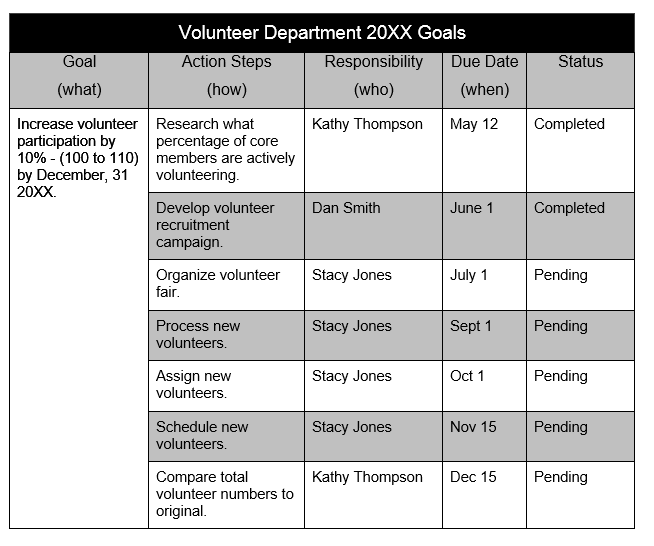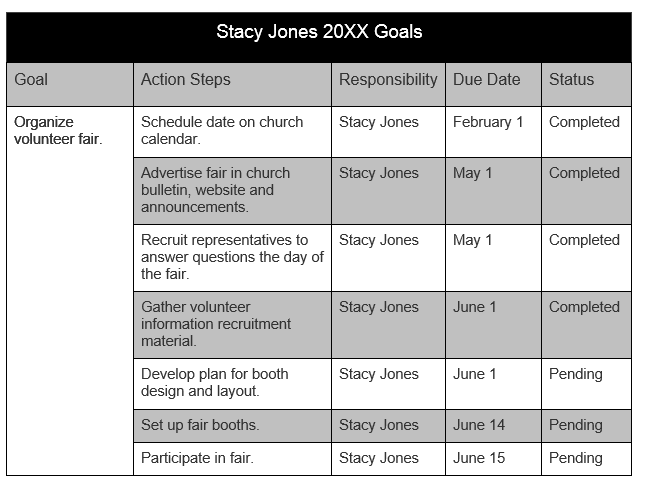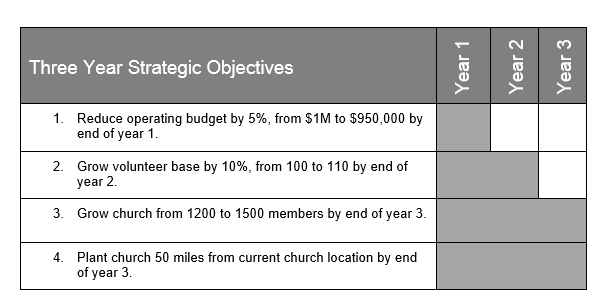There is a saying, “if you fail to plan, you plan to fail”. This is true in our personal lives, in business but it is also true for the church. Churches are birthed for a God ordained purpose. This purpose is articulated by developing a written mission, vision and values statement. This document provides clarity for why the church exists (mission), what it hopes to accomplish (vision) and the values (guiding principles) by which it will operate and make decisions.
‘Then the Lord answered me and said: Write the vision And make it plain on tablets, That he may run who reads it.” Habakkuk 2:2
This document is the tool that will guide the strategy and plan to get it done!
1. Develop a Strategy
Strategic plans are tools that organizations use to steer the fulfillment of its mission. A mission, vision and values statement is nothing more than words on paper without a strategy to bring it to pass. Churches go through a strategic planning process that helps them articulate what the ministry is trying to do and develops a plan to get it done. These plans are written for both short-term and long-term objectives and can take from six months to three years to implement. The idea is for the plan to determine what it is that needs to be accomplished and set a target for completing it.
Strategic planning can be tedious. It takes a lot of time, thought and prayer and should be done at the highest level of the organization. The planning process can take weeks or even months – depending on how much time can be dedicated to it. The result is a document that identifies what needs to be done (vision and strategic plan), how it gets done (organizational and departmental goals) and who will do it (employee and volunteer job descriptions). This structured process helps to ensure the vision is implemented throughout the entire organization.
Example: Three Year Strategic Plan Document
There needs to be a structured process to implement the strategic plan. Part of this structured process is to develop annual goals. These goals are written to break long-term objectives into manageable tasks.
2. Write Goals to Fulfill the Strategy
Once a strategy is developed, it is time to write goals that facilitate the implementation of the strategy. Goals should be specific enough to clarify what needs to be done, who is responsible for doing it and when it should be completed.
A common tool for goal development is the SMART goal model. In this model, goals are written to be specific, measurable, attainable, realistic, and timely. What this means is that goals need to be:
Specific: Is the goal specific enough for clarity?
Measurable: Is there a way to measure the success of the goal?
Attainable: Is the goal truly attainable?
Realistic: Is the goal realistically written?
Timely: Is there a timeline associated to the goal to ensure a completion date?
The point in using this model is to write goals that can be achieved. Overzealous goals often fall by the wayside so it is important to not bite off more than you can chew yet strive to get things done consistently.
Writing goals should include a discussion with the appropriate people and answer the questions – who, what, when and how:
Who – will do it?
What – needs to be done?
When – will it be completed?
How – what are the steps to get it done?
Answering these questions flushes out the specific details of the goal and brings clarity to the process.
3. Create a Goal Document
A goal document is a tool that is used to monitor goals. This document identifies, who will do what, by when.
Example: Department Goal Document.

4. Employee Goals
Goals need to be assigned to individual employees or volunteers to ensure that the goals are accomplished. This is done by articulating the goals and identifying the steps that need to be taken in order to accomplish them.
Example: Employee Goal Document

You will note these goals line up with departmental goals. This tool is valuable during the performance appraisal process because it will determine if the organization’s goals, which were set at the beginning of the year, were actually accomplished by the end of the year.
As these goals are accomplished, one at a time, the church will begin to see the progress toward fulfilling its strategy. And, as this strategy is implemented the church mission and vision will slowly become a reality.
Despite the daily disruptions, challenges and quick pace of a church, planning is a very important administrative function. Having a plan for your church provides a structure for clarity, disseminating resources and provides direction and focus for employees and volunteers.
A church’s ability to articulate its mission, vision and values, and develop a plan to achieve it, will have a significant impact on its ability to accomplish its God ordained purpose.
Does your church have a plan? Let me know in the comments!

Patricia Lotich is the founder of Smart Church Management, a site devoted to providing free articles, tools and resources for those managing a church operation. Patricia has ten years of Business Administration and Church Operations experience and has a driving passion to help churches fulfill their call by managing the resources God has given them – people, time and money. Follow Patricia on Twitter and Facebook


